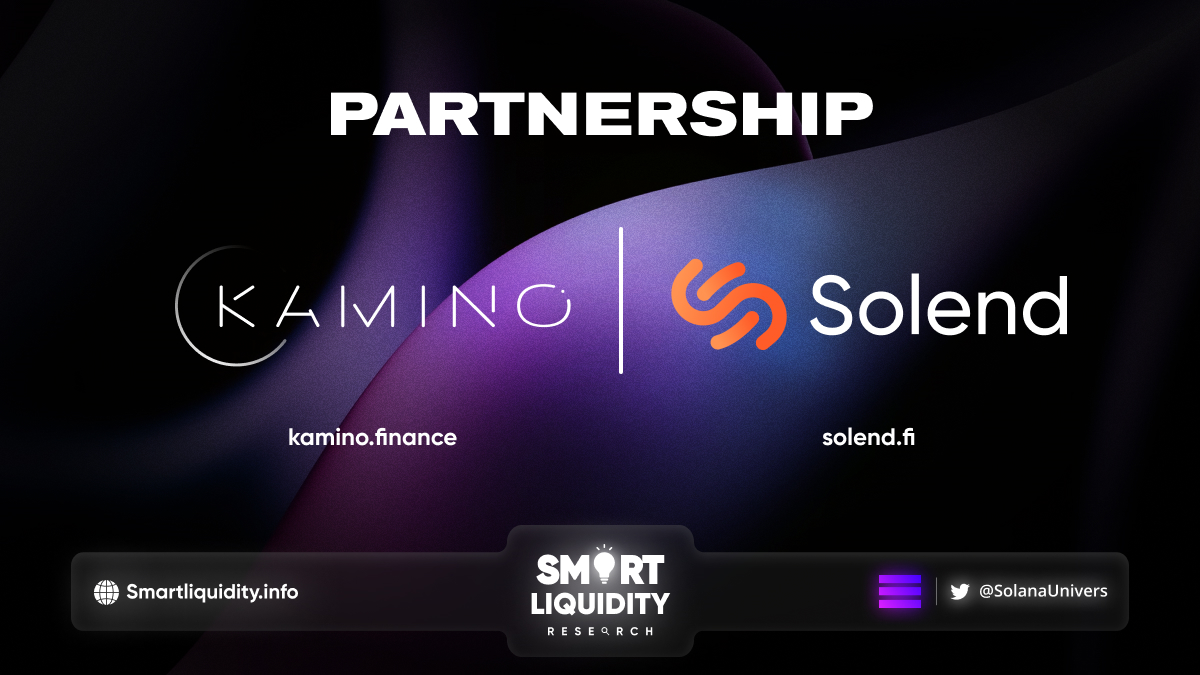Kamino and Solend Partnership to Optimize Liquidity on Solana


Solana’s ultimate liquidity destination, Kamino Finance, announced its partnership with Solend, the autonomous interest rate machine for lending on Solana.
Kamino Finance partnership with Solend aims to provide consumers with additional value in exchange for providing liquidity on Kamino.
Partnership Highlights
Solend will start taking kTokens from Kamino as collateral for borrowing various crypto assets from the USDH Pool.
Kamino aspires to be the ultimate liquidity destination on Solana, and Solend is helping to make it happen. Users can participate in one of the most intriguing use cases offered by this cooperation by borrowing stablecoins against kTokens on Solend: leveraging liquidity holdings several times on Kamino.
New Assets Added to Solend’s USDH Pool
The USDH Pool has provided highly attractive rates to both borrowers and lenders, and it has risen to the top of the isolated pools in terms of overall supply. The USDH Pool on Solend already housed five main crypto assets for borrowing and lending, and it will soon include kTokens for even more borrowing options.


Along with the first two kTokens, USDC will be put to the pool. This will increase users’ borrowing flexibility as well as their ability to use stablecoin vaults on Kamino that do not manage USDH pairings.
The first kTokens to be added to the USDH Pool are:
Users will be able to borrow up to 75% of the value of their kToken deposits, with a liquidation threshold of 85%. Borrowing assets with kTokens as collateral will also incur a 0.1% cost.
How to Leverage Kamino Positions with kTokens on Solend
With such a liberal LTV, incredibly low rates, and kTokens representing underlying holdings in stablecoin liquidity, it’s almost like an invitation to experiment with composability. What’s more, kTokens are yield-bearing assets that appreciate in value over time, making them ideal for use as collateral.
Users may now loop their borrowed USDC back into Kamino and leverage their position thanks to the addition of kTokens on Solend. To enhance exposure to the costs and incentives associated with providing stablecoin liquidity on Kamino.
Here’s an example of how users can use kTokens and Solend to leverage a USDH-USDC position on Kamino:
- Deposit liquidity into the USDH-USDC vault on Kamino.
- Deposit kUSDH-USDCo on Solend.
- Borrow USDC or USDH.
- Repeat Steps 1-3 to increase leverage
Because Kamino’s automated services support single asset deposits, customers don’t even have to divide their borrowed USDC into USDH or vice versa. The same procedure may be used for each stablecoin vault represented by kToken collateral until the maximum caps on Kamino and Solend are achieved.
Kamino and Solend Work Wonders for Liquidity on Solana


Borrowing from Solend with kTokens as collateral, a huge step for Solana’s DeFi composability. They are ecstatic to collaborate with Solend to give users with several options to increase their liquidity on Solana.
Given how quickly the maximum cap limits were achieved when kTokens were added as collateral for borrowing USDH on Hubble Protocol, it would not be shocking if Solend’s limitations were surpass in a similar time frame.
About Solend
Solend is an algorithmic, decentralized protocol for lending and borrowing on Solana. Lending and borrowing have proven themselves to be key in a DeFi ecosystem.
About Kamino
Kamino automatically manages your concentrated liquidity positions. When depositing your tokens, Kamino opens a liquidity pool position on a DEX and does everything for you. Rebalancing, auto-compounding, and finding the optimum range for capturing the most trading fees while avoiding impermanent loss (IL).
SOURCE
https://blog.kamino.finance/solend-adds-ktokens-as-collateral-for-borrowing/?utm_source=twitter&utm_medium=article&utm_campaign=blog_internal
REQUEST AN ARTICLE




